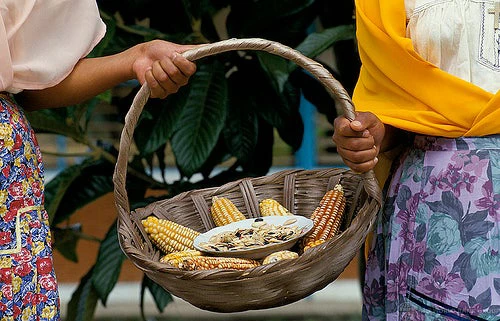If you Google the latest headlines, you will see plenty about the high price of food. Globally, however, average prices for major food commodities actually are 11% lower than a year ago, according to the latest edition of the World Bank’s quarterly Food Price Watch. Does this mean the world is out of the danger zone on high food prices? Economist José Cuesta sheds light on the issue.
Food prices have been falling globally since August 2012. Have we turned the corner on the food crisis?
It’s true we’ve seen prices declining in a sustained way, but we’re still only 18% away from that historic peak in 2012. The reasons prices increased in the first place – such as growing demand for food and weather concerns – are still issues, and probably will be in the future.I don’t think that we have turned any corner. Prices seem to be less volatile, and that’s good news. But that doesn’t mean the level of prices hasn’t continued to be high; they are still high.
While prices have been stable or falling internationally, some countries are experiencing large price increases. For instance, wheat is up 168% from a year ago in Argentina, and 92% in Sudan; maize prices have risen 89% in Malawi and 54% in Bolivia. What’s behind this?
Wheat prices in Argentina are very high with respect to last year, but Argentina is also one of the places where wheat prices have declined the most in the past three months. I think we’ll continue to see large variations in prices, not only in Argentina but other places.
Different factors affect domestic prices: weather concerns, inflation, logistical issues, seasonal factors, such as the harvest reaching the markets and being exported, and demand for imports by other countries. It’s a complex interplay. Bad news from big grain producers such as Russia or the United States can have consequences for domestic prices elsewhere. Countries such as Sudan, Malawi, and Somalia that have gone through currency depreciations have seen an impact on domestic prices: it’s more expensive to buy imports and more expensive to produce exports. This clearly has an impact on food prices.
Where is food price volatility the biggest problem, and how is it affecting people?
Two places where prices are going up and down are Argentina and South Africa. This price volatility has implications both for producers and consumers. For producers, it’s more difficult to plan ahead and make investment decisions, such as whether to change your crop or buy fertilizers. For consumers, it’s hard to cope with changes when you don’t know what they will be. We’ve seen that price shocks may drive people to use coping strategies that have nutritional consequences, such as eating less or switching to lower-quality, cheaper food.
Are lower international food prices reducing hunger?
Globally, undernourishment and hunger have been slowly declining, but that trend has slowed down, so it’s hard to make a clear connection with lower international food prices. Often countries with chronic and acute food insecurity are not well integrated into the global economy. The less connected to markets you are, the more important domestic factors, such as conflict or drought, will be. What happens in international markets doesn’t affect you much, but then you don’t have access to international markets to alleviate your domestic problems.
What should we be most concerned about over the next few months?
We don’t see factors that may change the picture dramatically in the next four to six months in terms of policy decisions or huge increases in oil prices, for example. Grain stocks are at good levels and we anticipate record harvests for the 2013-14 season. We expect international prices will continue to go down in a moderate way. We are monitoring other factors that could push prices up, such as demand for food and ethanol or droughts or very dry conditions in large producing and exporter countries, such as the U.S. If we can anticipate problems, we can do things to prevent the full impact.
While prices going down is great news, things can change quickly. Small things can change things in a big way, especially when they are unanticipated.
Learn More:
- Video: World Bank President Jim Yong Kim on Food Loss and Waste
- Infographic: Food Loss and Waste
- Blog by Jose Cuesta-- Food Waste: Doing the Math
- World Bank Live Chat on Food Waste, March 4, 9 am ET



Join the Conversation